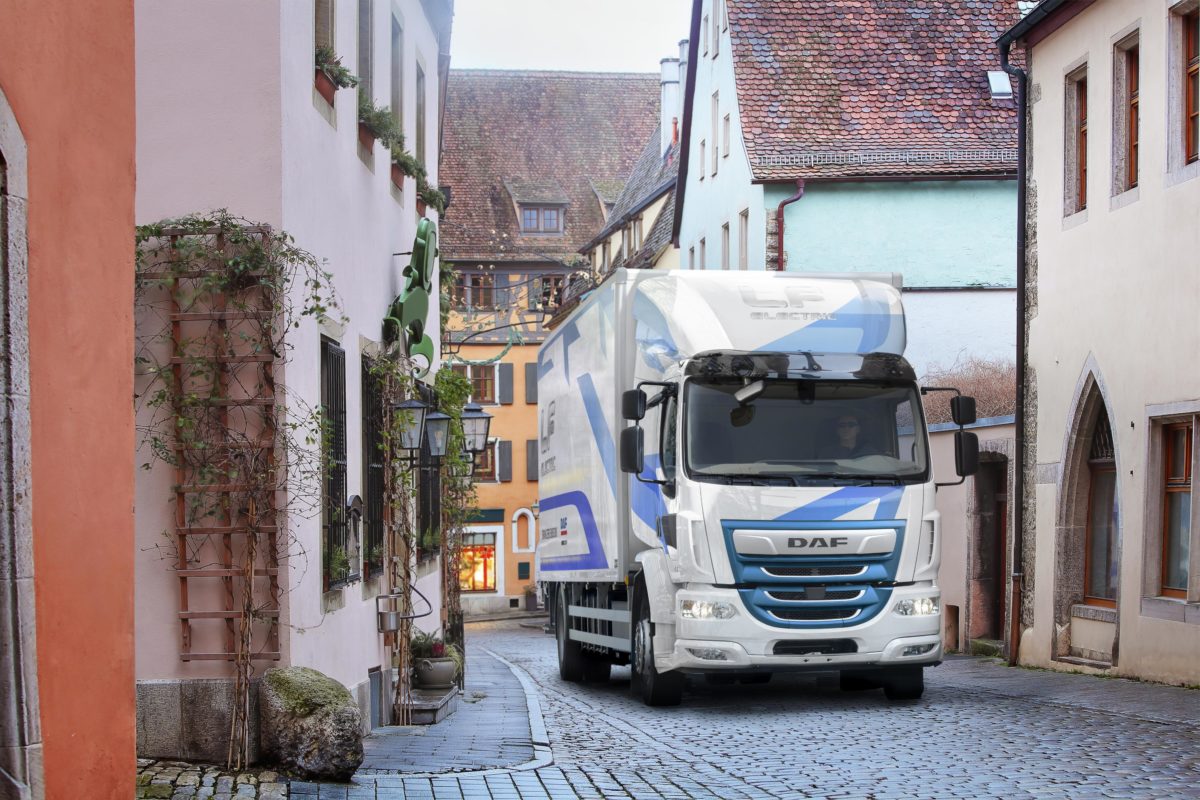
- Category:
- News
Decarbonising Fleet Operations: Equipping You with the Tools You Need
HGVs in the UK
In November 2021 the UK government confirmed that all new heavy goods vehicles (HGVs) are required to be zero emission by 2040. HGVs weighing 26 tonnes and under are required to be zero emission by 2035 and there is strong momentum building in the industry to achieve these targets. The market share of new zero emission HGVs continues to rise with zero emission trucks recording their highest market share in Q3 doubling the previous figures for Q2 2023.
The Department for Transport (DfT) announced £200m of funding for the ‘zero emissions HGV and infrastructure demonstrator programme’ in October 2023. This funding is intended to provide 370 zero-emission HGVs and 57 recharging and refuelling sites to support the decarbonisation of the HGV sector.
In collaboration with DAF Trucks and Innovate UK, Cenex conducted analysis for the ‘Battery Electric Truck Trial’ (BETT), to demonstrate to fleet operators that electric trucks can cover their real-world operations. This was achieved through evaluating the performance of twenty 19-tonne rigid trucks that have been deployed across nine public sector fleets in England. Key statistics from the trial showed 287,000 km travelled by all vehicles, with an average daily mileage of 95 km and highest daily mileage of 573 km, with a typical range varying between 225 km and 300 km, depending on driving environments.
Making data-driven decisions
Cenex, in partnership with Transport for London (TfL), developed the LoCITY fleet advice tool. This tool offers fleet operators information about the cost, range, performance, and emissions of different types of alternatively fuelled commercial vehicles in the UK. The recently updated tool helps fleet operators make informed decisions about purchasing low emission commercial vehicles by predicting their potential lifetime costs and emissions compared to conventional diesel vehicles.
Using their current fleet data, the LoCITY Tool can benefit fleet operators by generating information on the range of alternatively fuelled vehicles available in the market. Additionally, by providing operational performance data from a fleet, the results can be tailored to their fleet requirements to provide insight into the potential economic and carbon savings.
Integrated within the LoCITY tool is the ‘Commercial Vehicle Finder’ (CVF). It highlights 239 vehicles which are available across 6 different types of vehicles, ranging from cargo bikes to rigid trucks with various fuel types. The CVF helps organisations switch their vehicles to cleaner fuels, providing fleet operators with details of alternatively fuelled commercial vehicles that are available on the market.
Based on an 18-tonne rigid truck travelling 10,000 miles per year, on average the fleet operators could save over £5,000 on running costs when switching to a BEV compared to an equivalent diesel vehicle.
Some vehicles can save on running costs and total cost of ownership (TCO). For example, a medium van (LCV) driving 10,000 miles per year is predicted to reduce the vehicle’s whole life cost by £3,700 compared to an equivalent diesel vehicle.
Enter Input Data
Enter the data for Vehicle Type, Driving duty and Vehicle usage from the operations panel.
Review Results
Review the results for your selection. Use the tabs to switch between Cost & Emissions, Suitability, Detailed and Charts.
Optimisation
Fine tine your results by adjusting different options within the basic and advanced options. Your results will update in real-time.
Reaching net zero targets
Cenex has provided expert analysis and guidance to a number of both public and private sector fleets to help them reduce their carbon emissions. For instance, Cenex recently collaborated with a UK local authority to assess their current vehicle fleet and offer recommendations to help them achieve their goal of having a completely zero-emission fleet by 2030. This project revealed that all light commercial vehicles (up to 3.5 tonnes), which accounted for over 50% of the fleet, saw whole life cost savings ranging from £6,000 to £7,200 per vehicle when transitioning to battery electric alternatives.
Furthermore, all heavy goods vehicles (HGVs), including 7.5-tonne rigid trucks and 32-tonne Refuse-Collection Vehicles (RCVs), showed annual running cost savings ranging from £1,400 to £11,800 when shifted to battery electric alternatives. However, these vehicles did not achieve overall cost savings due to their higher purchase cost.
Drawing from our extensive experience in both private and public sector fleets, including local authorities and emergency services, Cenex is uniquely positioned to offer valuable support and guidance for your fleet transition.
For more information about the tool or to understand more about reducing emissions and decarbonising your vehicle fleet, contact us today!